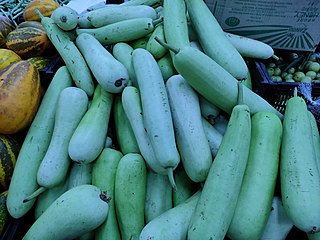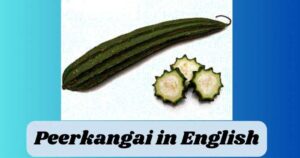Sorakkai in English
- English name of Sorakkai / Sorekai is “Bottle Gourd”
Sorakkai in Hindi
- Hindi name of Sorakkai is “Lauki”
Sorakkai in Telugu
- Telugu name of Sorakkai is “Sorakaya / Aanapakaya”
Sorakkai in Malayalam
- Malayalam name of Sorakkai is “Chorakaa”
Sorakkai in Kannada
- Kannada name of Sorakkai is “Sore kaaye”
Sorakkai in Marathi
- Marathi name of Sorakkai is “Dudhi”
Sorakkai in Gujarati
- Gujarati name of Sorakkai is “Doodhi”
Sorakkai in Bengali
- Bengali name of Sorakkai is “Lau”

What is Sorakkai or Sorekai or Suraikai?
Sorakkai, also known as bottle gourd, is a versatile vegetable that holds a special place in Tamil cuisine. Its scientific name, Lagenaria siceraria, reflects its botanical identity. This humble vegetable has been a staple in traditional dishes for generations, offering a unique flavor and texture to various recipes.
In Tamil culture, Sorekai is not just a vegetable but a symbol of health and well-being. Its origins can be traced back to ancient times when it was cultivated for its culinary and medicinal properties. The vegetable’s mild taste and ability to absorb flavors make it a favorite ingredient in curries, stews, and stir-fries.
Known for its elongated shape and light green skin, Suraikai is relatively easy to cultivate, making it a popular choice for home gardens. Its vines sprawl across trellises, producing an abundant harvest when given proper care and attention. The vegetable’s versatility extends beyond the kitchen, as its leaves and flowers are also used in traditional dishes and herbal remedies.
Whether enjoyed in a comforting stew or as a crispy snack, Sorekai offers a delightful culinary experience that appeals to all ages. Its subtle flavor profile makes it a versatile ingredient that can be incorporated into various dishes, adding a touch of freshness and nutrition to meals. Stay tuned to discover more about the nutritional benefits and culinary uses of this beloved vegetable.
Sorakkai’s English Name
Revealing the English name of Sorakkai unveils its global identity as “bottle gourd,” a name that reflects its unique shape and usage. The English moniker captures the essence of this versatile vegetable, highlighting its role as a culinary staple in various cuisines worldwide. Understanding the origins and significance of the name provides insight into the vegetable’s cultural importance and widespread recognition.
The name “bottle gourd” stems from the vegetable’s characteristic elongated shape, resembling a bottle or gourd. This name has been passed down through generations, symbolizing the vegetable’s traditional value and culinary versatility. In different parts of the world, the English name may vary, but the essence of the vegetable remains consistent – a nutritious and adaptable ingredient that enhances a wide range of dishes.
Health Benefits of Suraikai
After uncovering the global identity of Sorakkai as “bottle gourd,” it’s time to delve into its impressive nutritional value, health benefits, and medicinal properties. This versatile vegetable packs a powerful punch when it comes to enhancing overall well-being and vitality.
When it comes to nutrition, Sorekai is a low-calorie vegetable that is rich in essential nutrients like vitamins C and B, as well as minerals such as calcium, magnesium, and iron. Its high water content makes it a hydrating choice, perfect for maintaining optimal health.
Consuming Sorakkai offers a myriad of health benefits, ranging from improved digestion to weight management. Its fiber content aids in digestion, promoting a healthy gut and preventing digestive issues. Additionally, the vegetable’s low calorie and high fiber combination make it a great addition to weight loss diets, helping individuals achieve their fitness goals.
In traditional Ayurvedic practices and herbal medicine, Suraikaii has been revered for its medicinal properties. Modern research has further validated these claims, showcasing the vegetable’s potential in managing conditions like diabetes, high blood pressure, and cholesterol levels. Its antioxidant properties also contribute to overall health by combating free radicals and reducing inflammation.
To sum up the Benefits of Sorekai:
- Supports digestive health due to its high fiber content.
- Suraikai aids in weight management as a low-calorie, high-fiber food.
- Rich in vitamins and minerals essential for overall well-being.
- Helps regulate blood sugar levels, beneficial for individuals with diabetes.
- Promotes heart health by lowering blood pressure and cholesterol.
- Boosts hydration with its high water content.
- Suraikai enhances skin health and appearance due to its antioxidant properties.
- Supports bone health with its calcium and magnesium content.
- Contributes to a healthy immune system with its vitamin C content.
- Acts as a versatile ingredient in various cuisines, making it easy to incorporate into daily meals.
Sorakkai truly stands out as a nutritional powerhouse, offering a wide array of health benefits and medicinal properties that cater to both traditional practices and modern wellness needs.
Culinary Uses and Recipes of Sorakkai
Culinary versatility is a key aspect of Sorakkai that makes it a favorite ingredient in various cuisines worldwide. From comforting stews to refreshing salads, Sorakkai’s mild flavor and tender texture make it a versatile addition to a wide range of dishes. Whether you’re a fan of Asian stir-fries, Mediterranean salads, or Indian curries, Sorakkai can seamlessly fit into your culinary repertoire.
One popular dish that showcases Sorakkai’s culinary appeal is the Sorakkai Kootu, a South Indian stew made with lentils, coconut, and aromatic spices. This hearty dish is not only delicious but also nutritious, offering a perfect balance of flavors and textures. For a lighter option, Suraikai can be thinly sliced and added to salads for a refreshing crunch.
When it comes to cooking with Sorakkai, it’s essential to note that the vegetable cooks quickly and retains its shape well, making it ideal for stir-fries and curries. To enhance its flavor, consider marinating Sorakkai in spices before cooking or pairing it with bold ingredients like garlic, ginger, and chili peppers.
By exploring different cooking techniques and experimenting with flavors, you can unlock the full potential of Sorakkai in your kitchen. Whether you’re a seasoned chef or a novice cook, Sorakkai’s culinary versatility offers endless possibilities for creating delicious and nutritious meals for you and your family.
Growing and Harvesting Sorakkai
Cultivating Sorakkai is a rewarding experience that can be easily achieved with the right knowledge and care. When it comes to cultivation methods, Sorakkai thrives in well-drained soil and requires regular watering to maintain optimal growth. Whether you choose to plant it in your backyard garden or in containers on your balcony, Sorakkai can adapt well to different growing conditions, making it a versatile addition to any home garden.
Harvesting Sorakkai is a straightforward process once the vegetable reaches maturity. Typically, Sorakkai is ready for harvest when the fruit is firm and the skin is easily pierced with a fingernail. To ensure a bountiful harvest, it’s essential to use sharp garden shears to cut the fruit from the vine carefully. Proper storage techniques involve keeping Sorakkai in a cool, dry place to maintain its freshness and extend its shelf life.
Considering sustainability, Suraikai cultivation has a minimal environmental impact, especially when grown using organic practices. By incorporating Sorakkai into your home garden, you not only enjoy fresh, nutritious produce but also contribute to sustainable food practices that benefit both your health and the environment.







